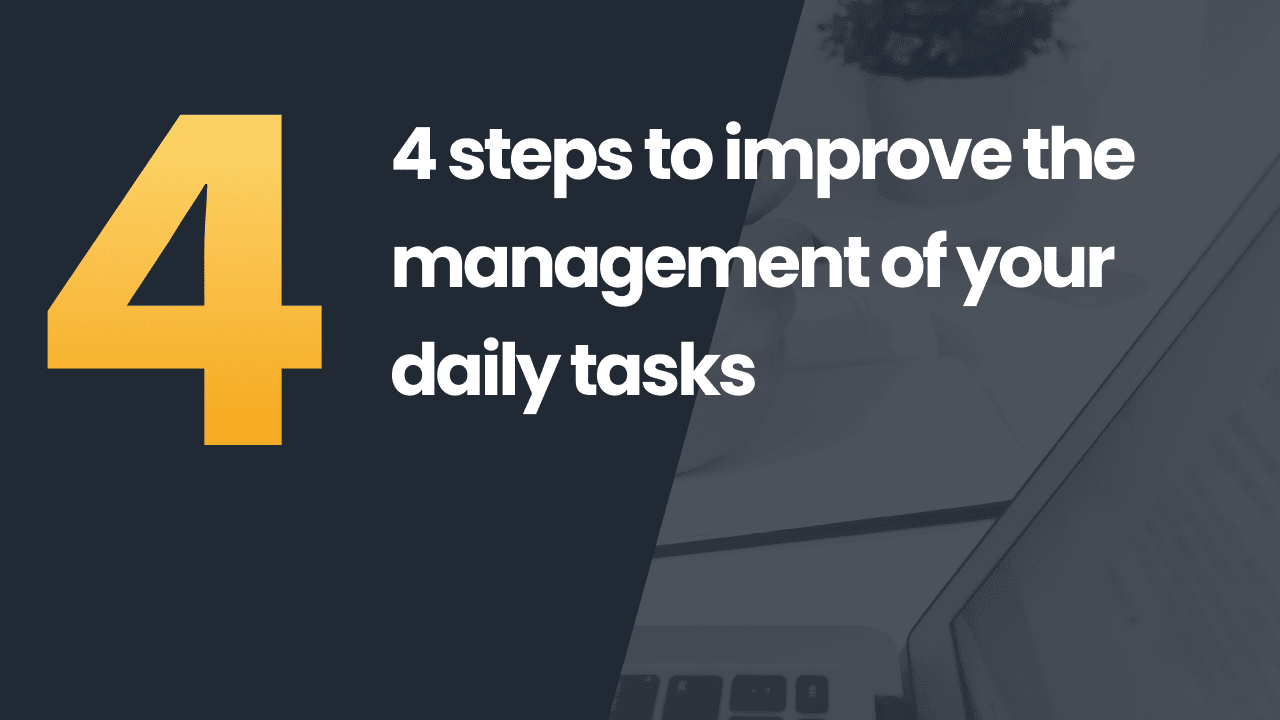Register for our next webinar !
Although meetings are integral to a company, there are many executives and employees who complain about their length being sometimes excessive. In January, a study conducted by Doodle1 revealed that Swiss employees spent an average of 5 hours per week in meetings. So how can you improve the efficiency of meetings?
An endless meeting is often the result of poor preparation. To save time during a meeting, there are a few steps that should not be neglected. The moderator, as well as the attendees, must contribute to the elaboration of the meeting in order to plan its frame and progress. The meeting agenda, which represents the discussion thread, needs to be established according to the goals of the meeting in order to stay focused. This will help employees progress efficiently without wasting time.
Before the meeting – a collective preparation
Ask yourself the right questions and set clear goals
According to the survey on meetings presented by Doodle, 72% of the interviewed employees think that a good meeting goes through clearly set goals!
Before scheduling a meeting, key questions need to be addressed:
What is the purpose of the meeting? The outcome of the meeting will serve as a guideline. This preliminary question will allow you to highlight the interest of the meeting for the attendees.
What are the main topics to address? The following step is to define the topics to be addressed during the meeting to achieve the desired goal. These topics will be the items of the meeting agenda.
Who are the people involved? A meeting with a large number of presenters is likely to drag on. It is therefore important to gather only those who are directly involved in the topics, decisions and tasks to be performed.
What is the estimated time for the meeting? According to the number of topics to be addressed, try to estimate and set the duration of the meeting and stick to it on the day of the meeting.
Establish an organized and clear meeting agenda
According to the survey on meetings presented by Doodle, 67% of the interviewed employees think that a good meeting goes through a clearly established meeting agenda.
List the different items in the meeting agenda > A meeting agenda consists of a list of items that resume the topics to be covered during the meeting. The establishment of a precise meeting agenda will ensure efficiency and rapidity during the meeting and will thus avoid unnecessary digressions and off-topic debates. Depending on the topics to be addressed, you can build the frame of the meeting by choosing, for example, a list of points hierarchized in different levels (ex: 1., 1.1, 1.2, 1.3,). If this organization does not seem relevant to you, you can try to group the items to address according to criteria that makes sense regarding the type of meeting: departments or services concerned, addressed topics, topics ordered according to the interventions of different presenters, steps of the project to realize, etc.
Define the role of the presenters > Depending on the established items, define who will speak during the meeting. In order to avoid taking attendees by surprise, schedule each person’s interventions ahead of time according to the meeting agenda. This will encourage them to prepare the meeting and will improve the efficiency and length of the discussions.
Make the meeting agenda accessible to allow attendees to consult it > Once the meeting agenda has been established, make sure to share it with all the attendees a few days before the meeting. A good preparation of the different interventions will contribute positively to the smooth running of the meeting. Furthermore, a previously established meeting agenda is likely to ensure a well-organized and productive meeting. The attendees will feel concerned and will not have the impression that the upcoming meeting will be wasting their valuable time.
During the meeting – the roles of the meeting moderator and the drafter
Progress according to the set order
On the day of the meeting, keep the goal of the meeting in mind. The moderator of the meeting is responsible for its smooth running and must avoid any misplacements by following rigorously the pre-established meeting agenda. This will avoid the attendees to feel lost and they will be able to follow the discussions by referring to the common frame previously diffused.
Address the covered topics in a systematic way
The moderator of the meeting must try to facilitate the task of the meeting minutes drafter by being clear and rigorous in the way he conducts the meeting. By discussing each item of the meeting agenda in a systematic way, you will ensure a productive meeting and meeting minutes drafting while avoiding wasting time. But how can you discuss the various items of the meeting agenda in a systematic way?
Here is a solution that considers the discussion of each item of the meeting agenda following three steps that will come out as three separate blocks of information in the meeting minutes:
Step 1 – the minutes of the discussions: Every topic covered in a meeting generally leads to a discussion that will need to be transcribed in the meeting minutes > this constitutes the first block of information of the discussed item.
Step 2 – the result of the discussions: The decisions and high points of the preliminary discussions should be highlighted > this constitutes the second block of information of the discussed item. Many employees often complain about leaving a meeting without really knowing which major decisions were made. Highlighting them will avoid that kind of uncomfortable feeling.
Step 3 – tasks arising from the decisions: The attendees will have to perform various tasks to reach the set goals > this constitutes the last block of information of the discussed item. Thanks to a clear division of tasks to perform, the attendees will be operational as soon as the meeting ends. This will avoid people forgetting what they are supposed to do from a meeting to the next.
This method will encourage you to proceed in an efficient manner and will facilitate the drafting of the meeting minutes. Furthermore, when the attendees will have to review the meeting minutes, they will easily obtain the necessary information. Needless to say, certain items will not require such a structure and can therefore be covered far more quickly – for example by using only one of the three proposed blocks of information.
In summary, the success of a company meeting is largely dependent on its preparation. By focusing on clearly set goals and on a clear meeting agenda, you will necessarily limit the length of your meetings and thus keep the attendees active and concerned. Establishing a meeting agenda can sometimes seem tedious. The trick is to create a meeting agenda template according to the different meetings that you conduct. This way, from one meeting to the next, you will only have to make a few changes to the template of the previous meeting agenda for the upcoming meeting, without having to create a new one each time.
Do you want to facilitate the preparation and conduct of your meetings?
Footnotes
-
To carry out the study in question, more than 6’500 professionals from the United Kingdom, Germany, Switzerland and the United States were interviewed. Doodle also looked at the analysis of 19 million meetings to write this report: Read the Doodle report ↩
Related posts
Get the latest tips sent straight to your inbox: Subscribe to our newsletter
Mathilde Sudan



